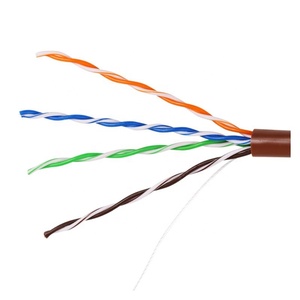Unshielded Twisted Pair Cable Computer Networks: An Overview
Unshielded Twisted Pair (UTP) cables are a popular choice for computer networks due to their excellent performance and cost-effectiveness. These cables consist of pairs of wires twisted together to reduce electromagnetic interference. UTP cables are predominant in Ethernet networks, providing reliable connectivity for a variety of applications, including local area networks (LANs), telephony, and broadband internet. Their simplistic design and ease of installation make them an ideal choice for both residential and commercial networking solutions.
Types of Unshielded Twisted Pair Cable Computer Networks
UTP cables come in several types, classified based on their performance capabilities and the level of data transmission speed they can support:
- Category 1 (Cat 1): Supports basic voice communications and older telephone systems.
- Category 2 (Cat 2): Suitable for data networks running up to 4 Mbps.
- Category 3 (Cat 3): Widely used in 10BASE-T Ethernet networks, supporting speeds up to 10 Mbps.
- Category 4 (Cat 4): Supports 16 Mbps data rates, mainly used for Token Ring networks.
- Category 5 (Cat 5): Handles 100 Mbps speeds for Fast Ethernet, perfect for most LANs.
- Category 5e (Cat 5e): Enhanced version of Cat 5, supporting gigabit speeds up to 1 Gbps.
- Category 6 (Cat 6): Offers higher performance, supporting frequencies up to 250 MHz and speeds of 1 Gbps over longer distances.
- Category 6a (Cat 6a): Extends the capabilities of Cat 6, allowing transmission speeds up to 10 Gbps.
- Category 7 (Cat 7): Advanced performance with shielding and supports speeds of up to 10 Gbps over longer distances with better resistance to crosstalk.
- Category 8 (Cat 8): The latest standard, designed for data center applications, supporting 25 Gbps to 40 Gbps data transmission.
Function and Features of Unshielded Twisted Pair Cable Computer Networks
UTP cables boast several important functions and features that contribute to their enduring popularity in network infrastructure:
- Electromagnetic Interference Reduction: The twisted pair configuration effectively cancels out external noise, helping maintain high data integrity.
- Cost-Effectiveness: Compared to other types of networking cables, UTP is relatively inexpensive, offering a manageable solution for networking needs.
- Ease of Installation: UTP cables are lightweight and easy to handle, facilitating quick setup in various settings.
- Versatility: They can be employed in various applications, from simple home networks to complex enterprise-level systems.
- Wide Compatibility: UTP cables are compatible with nearly all Ethernet devices, ensuring seamless integration with existing networking equipment.
Applications of Unshielded Twisted Pair Cable Computer Networks
Unshielded twisted pair cable computer networks are utilized across numerous sectors, demonstrating their versatility:
- Local Area Networks (LANs): UTP cables are the backbone of most LAN installations, providing robust connectivity for organizations of all sizes.
- Telecommunications: Many telephone systems rely on UTP for effective voice transmission and data handling.
- Data Centers: In data centers, Cat 6a and Cat 8 cables are employed to support high-speed connections and extensive server communication.
- Internet Connections: UTP is widely used in broadband applications and ADSL setups, offering reliable connections for internet service.
- Surveillance Systems: Many security and surveillance systems utilize UTP for video transmission, delivering high-quality footage.





















































